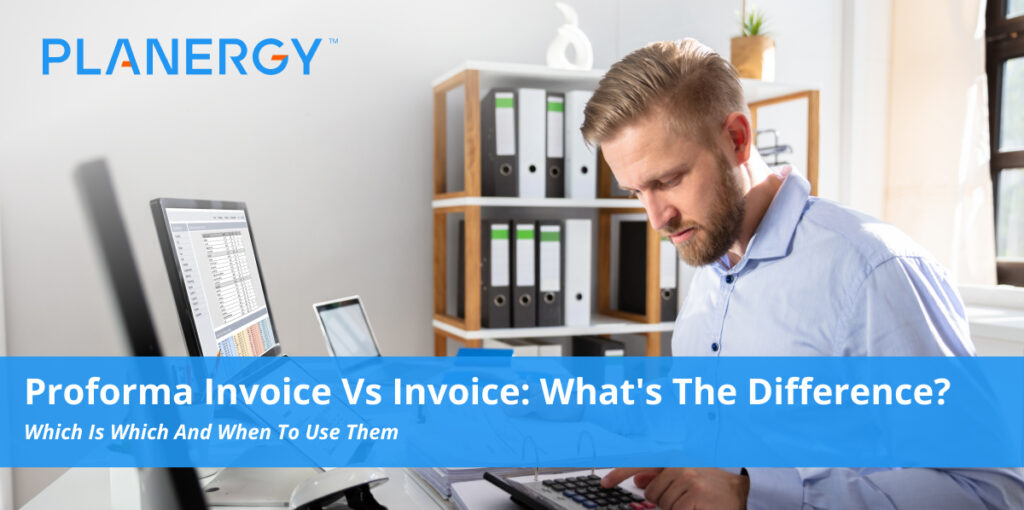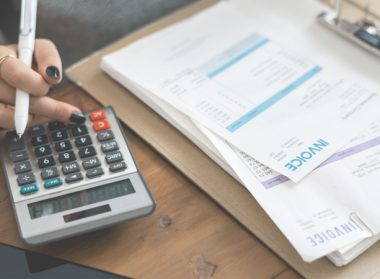While the particulars can be complex, processing invoices is, in the abstract, one of the most basic business processes.
But in order to successfully run and grow a business, anyone who processes invoices—from small business owners doing their own books to accounting professionals working for major conglomerates—must understand the different types of invoices and how they are used.
Proforma Invoices vs Invoices
Generally speaking, an “invoice” is simply a detailed document listing goods or materials being purchased and shipped.
Invoices are issued by the vendor at the request of the purchaser, and contain a full description of the quantity and quality of goods sold, their prices, terms of sale, etc.
Standard invoices (also called commercial invoices or simply invoices) are distinct from what is known as a proforma invoice.
They contain much of the same information, but serve different purposes. It’s important to avoid confusing or conflating the two, since only standard invoices are legal documents.
Standard invoices (also called commercial invoices or simply invoices) are distinct from what is known as a proforma invoice. They contain much of the same information, but serve different purposes.
What is a Proforma Invoice?
While you probably receive (or send) invoices after a sale is complete, proforma invoices are created and set before a sale. Pro forma is Latin for “for the sake of form” or “as a matter of form.”
You can think of proforma invoices as a kind of quote; they’re often called dummy invoices, and they’re prepared by the seller (or exporter) to provide precise details of:
- The goods and services requested, including quantities, type, and physical specifications.
- Estimated pricing, including individual costs as well as the total amount to be charged.
- Terms of sale, including shipping and delivery dates.
- The seller’s commitment to provide the listed goods and services following the terms and estimated pricing specified.
The purpose of a proforma invoice is to provide the buyer with an accurate and complete good faith estimate they can use to decide whether or not to issue a purchase order.
Asking for a proforma invoice represents a more serious interest on the part of a buyer or importer than a regular quotation; they’re generally committed to making the purchase, but want to iron out the final details before proceeding with the approval process and making a binding agreement with the exporter or seller.
These invoices do not include an invoice number—they will instead be labeled as proforma—and they’re not legally binding documents (as the buyer (or exporter) must generally issue a purchase order first, have that PO accepted by the seller (or importer) to enter into a legally binding sales agreement, and then issue an invoice number for the actual sale).
Customers are not legally required to pay the amount listed on a proforma invoice.
These invoices can’t be used to reclaim value-added tax (VAT), and they’re not recorded in the company bookkeeping or financial reports since they don’t have an invoice number, don’t represent a binding agreement, and don’t have an actual financial impact on either party for accounting purposes.
Businesses that use invoicing software may find extra utility in proforma invoices, as the information entered into the proforma invoice template can be used to automatically populate the final invoice once the legally binding agreement has been struck, saving time and labor.
In addition, a proforma invoice may be treated as a preliminary bill of sale for customs purposes in international trade.
What is a Commercial Invoice?
Unlike its proforma sibling, a commercial invoice is non-negotiable, legally binding, and is sent only after the approval process is complete, the transaction has an associated purchase order, bill of lading, and invoice number, and an actual sale has occurred.
Once it’s “set in stone” and matched to an approved purchase order and bill of lading, they become a financial record and legal document.
These invoices are bills, not quotations (hence final invoice).
They’re a request for payment from the accounts receivable team at the seller or exporter to the accounts payable team at the buyer or importer. In addition to being clearly labeled as an invoice, a commercial invoice includes:
- A unique invoice number.
- Invoice issue date.
- Delivery date.
- Detailed product descriptions of the goods and services provided, including quantity, quality, type, and pricing.
- Payment terms, including method of payment and the due date.
- Discounts offered by the seller/exporter (if any).
- Credit terms.
- Total amount due, including any applicable taxes.
A basic chart can provide a convenient reference for keeping these two similar but distinct invoices straight:
|
DESCRIPTION |
PROFORMA INVOICE |
INVOICE |
| Definition: | Provides a good faith estimate of the pricing and terms for a given transaction, as well as a detailed description of the goods and services to be sold. Does not include an invoice number. | A legally binding document containing full details of goods and services to be provided in a given transaction. Must include an invoice number. |
| Document Type: | A quotation. | A bill. |
| Issued: | Before a purchase order is issued. | After a purchase agreement has been struck but before payment has been made. |
| Accepted: | As a precursor to the actual sale. | As confirmation of the actual sale. |
| Purpose: | A negotiation tool to help buyers or importers who are actively committed to making a purchase iron out the final details of the order and make a decision about whether to place it based on the information provided. | To provide the buyer or importer with the amount due for payment. |
| Bookkeeping: | Not recorded, as the invoice is neither a financial record nor a legal document. | Financial entries are created by the seller and buyer to reflect a legally-binding transaction. |
Not All Invoices Are Created Equal
They both have a role to play in making purchases, but only one affects your bottom line and bookkeeping.
Take the time to use proforma and commercial invoices for their proper purposes, and avoid wasting time and money—and potentially damaging your precious supplier relationships, too.




